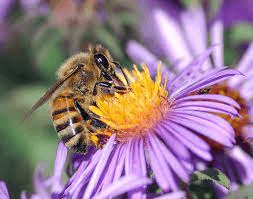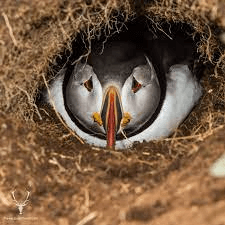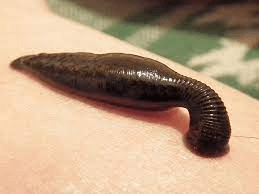Living things in the environment such as:
- Animals
- Plants
- Fungi
- Bacteria
What does it mean to be "Biotic"?
The materials and products that are found in nature such as:
- Trees
- Water
- Oil
- Minerals
What are Natural Resources?
These organisms produce food energy for themselves and all other organisms on Earth.
What are Producers?
When a liquid changes into gas.
What is Evaporation?
The gradual process by which some species replace other species in an ecosystem.
What is succession?
This type of ecological monitoring tracks changes in the landscape (use geographical surveys, satellite imaging, field observations and measurements)
What is Physical monitoring?
Non-living things in the environment such as:
- Air
- Water
- Soil
- Sunlight
- Minerals and Nutrients
What does it mean to be "Abiotic"?
Something you would really like to have, but isn't necessary for your survival.

What is a Want?
These organisms eat other living things
What are Consumers?
When water that is taken up through a plant’s roots evaporates from its leaves, stem, and flowers.
What is Transpiration?
Growing from new lava or rocks from a volcano.
What is an example of Primary Succession?
This type of ecological monitoring tracks climate, temperature, weather, amount of light, amount of precipitation.
What is Environmental monitoring?
The 4 basic needs of living things
What are food, water, suitable habitat, and gas exchange?
Something necessary for survival.
What is a Need?
This type of organisms can only survive in a very specific environmental condition. Usually they only survive on one or a few types of food.
What are specialists? (Generalists can survive in a wide variety of environmental conditions).
When vapour changes into a liquid.
What is Condensation?
The gradual (re)growth of organisms in an area that previously had a number of organisms
What is Secondary succession?
This type of ecological monitoring tracks the quality of air, soil and water (moisture, pH, minerals and nutrients, look for pollutants).
What is Chemical monitoring?
White fur in snowy areas, camouflage, webbed feet or flippers to swim fast, long beaks for getting insects are all examples of this inherited characteristic that helps an organism survive in its environment.
What is an Adaptation?
The 3 R's?
What are Reduce, reuse, recycle?
The role or characteristic activity that is filled by an organism in an ecosystem.
What is a Niche?
When water vapour that forms from the condensation inside of clouds falls as rain, sleet, snow, or hail.
What is Precipitation?
The first species to arrive in a disturbed area.
What is a pioneer species?
This type of ecological monitoring tracks populations of organisms.
What is Biological monitoring?
A symbiotic relationship between two different organisms in which both benefit.

What is Mutualism?
First Peoples used ALL parts of the buffalo, leaving little to waste and having a ___________ _________________ _______________.
What is a small environmental impact?
Movement of pollutant through the levels of a food chain so that greater quantities are present up the food chain.
What is Bioaccumulation/Biomagnification?
This cycle is essential for gas exchange.
What is the carbon cycle?
This type of succession is faster
What is secondary succession?
Data is gathered before a disturbance occurs so that scientists have a starting point to compare changes in the environment.
What is Baseline data?
A symbiotic relationship where one organism benefits and the other partner neither loses or gains (neutral).


What is Commensalism?
True or False: Animal feedlots do not contribute to a large ecological footprint because all the animals are in one place.
FALSE. Feedlots concentrate animal waste and other hazardous substances that can pollute the air and the water with their runoff. The animals also consume huge amounts of grain and water.
This trophic level has the largest population and biomass.
What are producers?
___________ is cycled through the environment through a food web. It decreases as you move up the food chain because the organisms use it for other life processes (movement, growing etc.) or lost as waste.
What is energy?
A forest that has completely recovered from a disturbance.
What is a climax community?
A plant or animal species that are often used to help indicate environmental change or the health of an ecosystem. Frogs are an example of this.
What is an Indicator species?
A symbiotic relationship where one organism benefits and the other is harmed.


What is Parasitism?
A calculation of the total area of land and water needed to supply all of the materials and energy that you use, as well as the waste that you produce
Includes food, water, supplies to build shelters and make all the things you use
Includes energy (electricity, natural gas etc.) required to run, manufacture, and transport all the things that you buy
What is your Ecological footprint?
All living things exchange gasses. Plants use _______________________ to make food and release _______________________ to the environment.
All living things exchange gasses. Plants use __CARBON DIOXIDE___ to make food and release __OXYGEN__ to the environment.
This type of precipitation has a pH value below 5.6 because sulfur and nitrogen pollutants reacted with water vapour in the atmosphere.
What is Acid rain?
Wildflowers and Grasses
What are pioneer species in secondary succession?
Resources are being replenished at a rate equal to or greater than the rate at which they are being used and that wastes are being completely absorbed.
What is Sustainability?